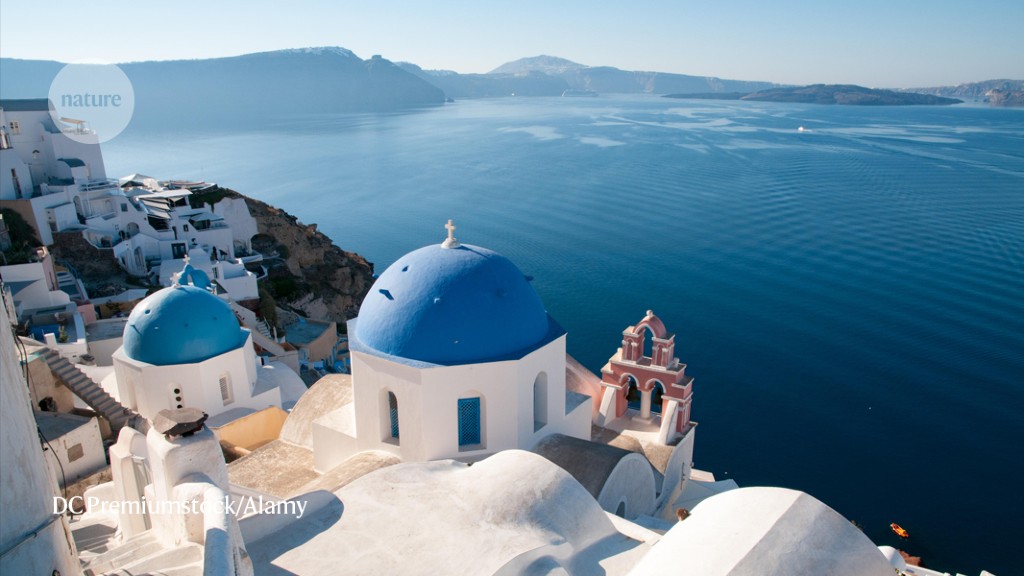Volcanology
Eruptions of Santorini volcano, which created the Greek island of the same name, are linked to drops in sea level.
The volcano that created the island of Santorini, a popular tourist destination in Greece, tends to erupt when the sea level drops substantially, according to data from the past 360,000 years.
The global sea level falls during planetary cold spells, when ice sheets freeze, and rises again when the ice melts, pouring back into the oceans. This pattern can affect the timing of eruptions by island volcanoes.
Chris Satow at Oxford Brookes University, UK, and his colleagues compared the history of Santorini’s eruptions over the past 360,000 years with records of sea-level height during that period. Almost every time sea level dropped by 40 metres below today’s level, molten rock began squirting upwards inside the volcano. When sea level dropped by another 30 or 40 metres, that molten rock usually made it to the surface, causing an eruption.
Drops in sea level reduce the weight pressing down on the volcano. This alters stress levels in the rocks, which fracture and provide paths for molten rock to rise towards the surface. Similar changes in stress could affect many other island and coastal volcanoes around the world, influencing their eruptions.





More News
Countering extreme wildfires with prescribed burning can be counterproductive
Hacking the immune system could slow ageing — here’s how
How artificial intelligence is helping Ghana plan for a renewable energy future